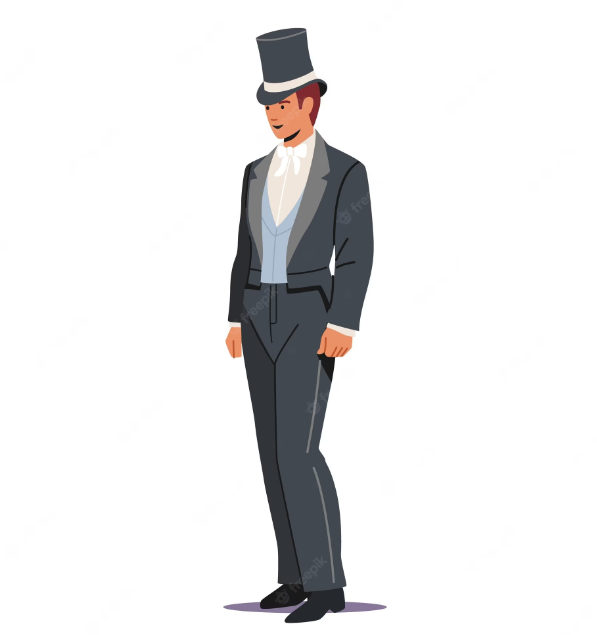The United Kingdom has a rich culture and history when it comes to fashion. While there is no official national dress, the English suit has come to be recognized as a quintessential symbol of British style. In this article, we will explore the history and evolution of the United Kingdom National Dress, its features and components, and its significance in contemporary fashion. We will also discuss some frequently asked questions about the English suit.
The Origins of United Kingdom National Dress
The history of the English suit dates back to the early 19th century. Prior to this, men's fashion was characterized by loose-fitting garments such as the frock coat and tailcoat. However, with the Industrial Revolution and the rise of the middle class, there was a growing demand for more practical and comfortable clothing. This led to the emergence of the lounge suit, which was designed to be worn for a variety of occasions, from business meetings to social events.
Evolution of United Kingdom National Dress
Over time, the design of the English suit has undergone various changes and modifications. In the late 19th century, the three-piece suit consisting of a jacket, waistcoat, and trousers became popular. By the 1920s, the suit had evolved into a more relaxed style, with softer lines and lighter fabrics. In the 1950s and 1960s, the so-called "Ivy League" style became popular, characterized by slim-fitting suits with narrow lapels and a natural shoulder line.
Features and Components of the English Suit
The English suit is typically made from high-quality wool or a wool blend, and consists of several components:
Jacket
The jacket is the most important component of the English suit. It should fit snugly but not be too tight, with a natural shoulder line and a single vent at the back. The lapels can be peaked, notched, or shawl, depending on the wearer's preference.
Trousers
The trousers should fit comfortably and have a clean, streamlined look. They should be hemmed to just touch the top of the shoe, with no break in the fabric.
Waistcoat
The waistcoat, also known as a vest, is an optional component of the English suit. It can be single- or double-breasted, and should fit snugly without being too tight.
Shirt
The shirt should be made from high-quality cotton or a cotton blend, and should fit comfortably without being too loose or too tight. It should be tucked into the trousers, with the sleeves extending to just below the wrist.
Tie
The tie should be made from silk or a silk blend, and should be tied in a neat, symmetrical knot. The color and pattern of the tie should complement the suit.
Shoes
The shoes should be made from high-quality leather, and should be polished and shined to complete the overall look of the English suit.
Significance of the English Suit in Contemporary Fashion
Today, the English suit continues to be a symbol of timeless elegance and sophistication. It is a versatile piece of clothing that can be worn for a variety of occasions, from weddings and formal events to business meetings and job interviews. The classic design of the English suit has also inspired many contemporary fashion designers, who have incorporated elements of the suit into their own designs.
How to Wear an English Suit
To wear an English suit properly, it is important to choose the right fit and style. The suit should be tailored to the individual's body type, with the jacket fitting snugly but not too tight, and the trousers hemmed to just touch the top of the shoe. The shirt and tie should complement the suit, with the tie tied in a neat, symmetrical knot. To complete the look, the shoes should be polished and shined.
Frequently Asked Questions (FAQs)
1. What is the difference between a suit and a tuxedo?
A suit is a formal outfit consisting of a jacket, trousers, and a shirt, usually worn with a tie. A tuxedo, on the other hand, is a more formal outfit that is typically worn for black-tie events. It consists of a jacket, trousers, a shirt, and a bow tie.
2. How do I choose the right fit for my suit?
The right fit for a suit depends on the individual's body type. The jacket should fit snugly but not too tight, with the sleeves extending to just below the wrist. The trousers should be hemmed to just touch the top of the shoe, with no break in the fabric.
3. Can I wear a suit to a casual event?
While the English suit is typically worn for more formal occasions, it can also be dressed down for a more casual look. This can be achieved by pairing the suit with a more casual shirt or by removing the tie.
4. What are some common accessories worn with an English suit?
Common accessories worn with an English suit include a pocket square, cufflinks, and a tie clip. These accessories can add a touch of elegance and sophistication to the overall look.
5. How do I care for my English suit?
To care for an English suit, it is important to store it properly by hanging it on a wooden hanger and covering it with a breathable garment bag. The suit should also be dry cleaned only, and should not be worn for more than one day in a row to prevent wear and tear.
Conclusion
The English suit has a long and fascinating history, and continues to be a symbol of timeless elegance and sophistication in contemporary fashion. By understanding the origins and evolution of the suit, as well as its features and components, we can appreciate its significance and importance in British culture and beyond.
References
- "The History of the Suit: 1800s - 1900s," Real Men Real Style, accessed April 17, 2023, https://www.realmenrealstyle.com/suit-history-1800s-1900s/.
- "A Guide to Men's Suit Styles," The Gentleman's Gazette, accessed April 17, 2023, https://www.gentlemansgazette.com/suit-styles/.
- "The Evolution of the Suit," GQ, accessed April 17, 2023, https://www.gq.com/story/the-evolution-of-the-suit.
